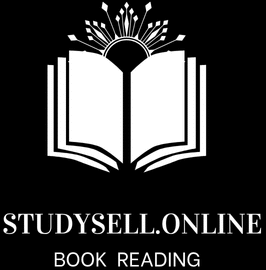Introduction to Brontë Sisters Novels
The Brontë sisters—Charlotte, Emily, and Anne—are literary icons whose novels have enthralled readers for more than 150 years. Writing as the pseudonymous Currer, Ellis, and Acton Bell, the sisters wrote timeless novels combining gothic romance, social critique, and emotional richness. From Jane Eyre to Wuthering Heights, their books are classics in literature, read in classrooms and loved by bookworms across the globe. This 1200-word blog explores the Brontë sisters’ novels, examining their themes, importance, and timelessness and providing SEO tips to get you read. Whether a Victorian novel enthusiast or unfamiliar with the Brontës, this guide will inspire you to read their works of art.

Who Were the Brontë Sisters?
Charlotte (1816–1855), Emily (1818–1848), and Anne (1820–1849) Brontë grew up in the isolated Yorkshire moors, where their imaginations flourished. Raised in a parsonage in Haworth, England, the sisters faced personal tragedies, including the loss of their mother and siblings, which shaped their introspective and passionate writing. They wrote in the 1840s and 1850s, defying gender conventions by using male pen names to become accepted in a world of literature dominated by men. Their novels, full of rich characterizations and detailed settings, remain popular with readers for their portrayal of love, self-reliance, and social restraint.
Why Brontë Sisters Books Are Important
Brontë sisters’ books are famous for a number of reasons:
-
Literary Innovation: Their works combined gothic themes, psychological complexity, and social commentary, opening the doors to contemporary literature.
-
Feminist Themes: Readers such as Jane Eyre and Agnes Grey defied Victorian gender norms, influencing generations to come.
-
Cultural Impact: Their books are made into movies, television programs, and stage plays, ensuring their memory stays alive.
-
SEO Potential: Pages about Brontë sisters novels draw in readers who look for classical literature, book reviews, or study guides.
Through their novels, readers resonate with common themes of love, survival, and identity, which render the Brontës’ novels classic.
The Brontë Sisters’ Main Works
Following is an in-depth consideration of the most renowned novels by Charlotte, Emily, and Anne Brontë, examining their themes, characters, and popularity.
1. Jane Eyre by Charlotte Brontë (1847)
Overview: Written under her pseudonym Currer Bell, Jane Eyre traces the life of the orphaned Jane, a governess who encounters love, autonomy, and ethical challenges at Thornfield Hall. Her affair with the mysterious Mr. Rochester is a foundation of gothic romance.
Themes: Autonomy, love, ethics, and class.
Key Characters: Jane Eyre, Edward Rochester, Bertha Mason.
Why It’s Iconic: Jane’s independence and the novel’s combination of realism and gothic suspense render it a masterpiece of literature.
Quote: “I am no bird; and no net ensnares me: I am a free human being with an independent will.”
Ideal For: Fans of strong heroines and romance drama.
Use Case: Great for book clubs or English lit courses.
2. Wuthing Heights by Emily Brontë (1847)
Overview: Ellis Bell’s only novel, Wuthering Heights is a dark romance of passion and vengeance between Heathcliff and Catherine Earnshaw on the desolate Yorkshire moors.
Themes: All-consuming love, revenge, and the supernatural.
Key Characters: Heathcliff, Catherine Earnshaw, Edgar Linton.
Why It’s Iconic: Its raw emotional power and tangled characters buck conventional romance, gaining it a cult following.
Quote: “Whatever our souls are made of, his and mine are the same.”
Ideal For: Readers of gothic fiction and tragic romance.
Use Case: Ideal for readers looking for emotionally intense stories.
3. The Tenant of Wildfell Hall by Anne Brontë (1848)
Overview: Written as Acton Bell, this is the story of Helen Graham, a reclusive widow who escapes from a violent marriage to save her son.
Themes: Domestic violence, feminism, and redemption.
Key Characters: Helen Graham, Gilbert Markham, Arthur Huntingdon.
Why It’s Iconic: Frequently classed as a proto-feminist novel, it fearlessly critiques marriage and gender roles.
Quote: “I would rather be a beggar and single than a queen and married.”
Ideal For: Social reform and feminist literature readers.
Use Case: Perfect for Victorian gender dynamics discussion.
4. Shirley by Charlotte Brontë (1849)
Overview: Written during the Napoleonic Wars, Shirley touches on industrial discontent and the lives of two women, Caroline Helstone and Shirley Keeldar.
Themes: Women’s roles, class conflict, and friendship.
Key Characters: Shirley Keeldar, Caroline Helstone, Robert Moore.
Why It’s Iconic: More socially commentary-based than Jane Eyre, with female protagonists.
Quote: “Women are supposed to be very calm generally: but women feel just as men feel.”
Ideal For: Historical fiction and social commentary readers.
Use Case: Perfect for learning about industrial England.
5. Agnes Grey by Anne Brontë (1847)
Overview: The novel tracks Agnes, a governess, as she struggles to teach spoiled children while working towards independence.
Themes: Duty, perseverance, and class conflict.
Key Characters: Agnes Grey, Edward Weston, the Bloomfield family.
Why It’s Iconic: Its down-to-earth depiction of a governess’s life presents a more subdued but moving story.
Quote: “It is foolish to wish for beauty, but wise to wish for usefulness.”
Ideal For: Readers who appreciate subtle, character-based fiction.
Use Case: Great for readers discovering lesser-known Brontë novels.
The Lasting Attraction of Brontë Sisters Novels
The Brontës’ books endure for their:
-
Emotional Resonance: Characters such as Jane and Heathcliff speak to readers through their passions and struggles.
-
Feminist Subtext: The sisters’ heroines subvert societal conventions, inviting contemporary feminist readings.
-
Gothic Mood: The eerie moors and atmospheric settings immerse readers in worlds.
-
Adaptability: Adaptations, such as the 2011 Jane Eyre movie and 2023 Wuthering Heights stage shows, make their stories relevant.
X posts from 2025 feature ongoing fan discussions, with hashtags such as #BronteSisters trending among book groups, indicative of their cultural longevity.
How to Share Brontë Sisters Books Content
Whether you’re a blogger, educator, or book enthusiast, here’s how to share Brontë sisters books content effectively:
1. Write Engaging Book Reviews
Tip: Highlight unique elements, like the gothic romance of Jane Eyre or the feminist themes of The Tenant of Wildfell Hall.
Example: “Wuthering Heights weaves a haunting tale of love and revenge that lingers long after the last page.”
SEO: Title and headings use keywords such as “Brontë sisters books review” or “classic Victorian novels.”
2. Develop Social Media Content
Tip: Post famous quotes with images of the Yorkshire moors, utilizing tools such as Canva.
Example: Share a Jane Eyre quote: “I am no bird; and no net ensnares me. #BronteSistersBooks.”
SEO: Use hashtags such as #BronteSisters, #JaneEyre, and #WutheringHeights.
3. Host Book Discussions
Tip: Start a book club on Jane Eyre or host a seminar on Anne Brontë’s feminism.
Example: Explain how The Tenant of Wildfell Hall satirizes marriage.
SEO: Market with posts with titles such as “Join Our Brontë Sisters Book Club.”
Where to Find Brontë Sisters Books
Discover these novels at:
-
Amazon: For hardcover and eBook editions of Jane Eyre, Wuthering Heights, et al.
-
Penguin Classics: For scholarly annotated editions.
-
Libraries: Search for Brontë sets at local or university libraries.
-
Bookshops: Individual bookstores tend to have old Brontë editions.
For the latest, follow X posts with #BronteSisters or www.bronte.org.uk.
Common Mistakes to Avoid
When posting Brontë sisters books content, do not:
-
Ignore Anne: Do not only highlight Charlotte and Emily; Anne’s books are just as engaging.
-
Ignoring Context: Mention the sisters’ historical and social context for depth.
-
Keyword Stuffing: Use “Brontë sisters books” naturally.
-
Low-Quality Visuals: Use high-resolution book covers or moorland imagery.
Conclusion
Brontë sisters novels—from the independent spirit of Jane Eyre to Wuthering Heights’s poignant passion—contain classic tales that remain fascinating for readers today. Their mix of gothic romance, feminist sensibilities, and richly detailed settings is sure to appeal to classic literature readers. Share their writings with SEO-friendly content, and you can reach out to readers hungry for Victorian fiction and literary debates. Join the world of the Brontës and be inspired by their words.
